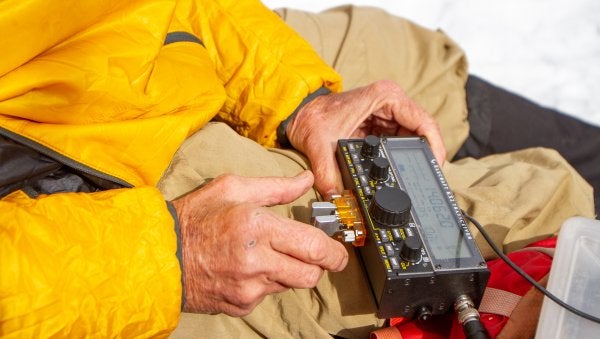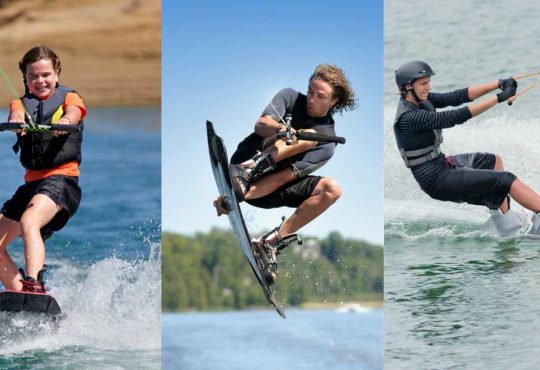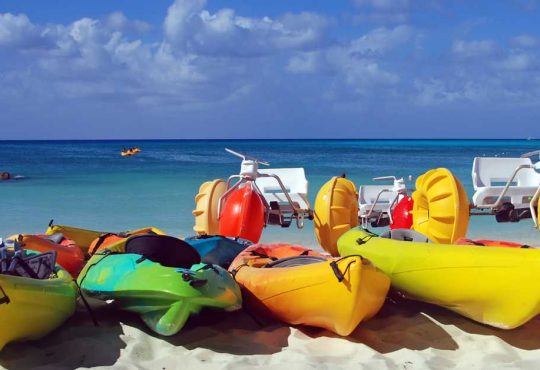On a gray Friday afternoon last spring, Steve Galchutt sat atop Chief Mountain, an 11,700-foot peak along Colorado’s Front Range. An epic panorama of pristine alpine landscape stretched in almost every direction, with Pikes Peak rising to the south and Mount Evan towering just to the west.
It was a breathtaking view and the perfect backdrop for a summit selfie. But instead of taking his smartphone, Galchutt was absorbed by another device: a handheld transceiver. Sitting on a small piece of rock and snow, head tilted down and tilted to the side, he listened as he emitted a steady stream of static beeps: dah-dah-di-dah dah di-di-di-dit. “This is Scotty in Philadelphia,” Galchutt said, translating Morse code. Then, tapping two silver paddles attached to the side of the radio, he sent his message, first with some details about his location, then his call sign, WG0AT.
At this point, an indiscreet hiker could have been forgiven for wondering what exactly Galchutt was doing. But his answer – an enthusiastic “amateur radio, of course!” – would probably only further aggravate their confusion. After all, the popular image of an amateur radio enthusiast is an elderly recluse strapped to an armchair, not a crampon-clad adventurer. And their natural habitat is usually a basement, or “ham shack,” not a windswept peak in the middle of the Rocky Mountains.
Galchutt fits this stereotype in part – he’s 75 – but the similarities end there. An avid hiker and camper, his favorite cabin is on top of a mountain, and the higher the peak, the better.
Another rapid explosion of dits is dahs jumped from the radio. “Wow!” Galchutt said: “Spain!”
Nearby sat Brad Bylund (callsign WA6MM) and Bob and Joyce Witte (respectively K0NR and K0JJW). Together, the four are part of a group called Summits on the Air (SOTA), a high-tracking international radio version.
“I had a woman who came up to me and asked me what I’m doing,” Bylund said. “And she pointed out to me,” You know your cell phone works here, right? “They totally miss the whole thing. ”
“Bob and I call those bubble people,” Joyce added with a smirk.
Amateur radio enthusiasts are used to being slandered as defenders of some anachronistic pastime, a retro social network for retired vets and lo-fi tech enthusiasts. Ridicule goes back to the very origins of the word Ham, a pejorative that professional radio operators in the early 20th century used to identify amateurs with “iron fist” Morse code skills.
But the reality is that the amateur radio, rich in cutting-edge technology and with a high level of competence, has always been ahead of its time. “There’s a tendency to think it’s one of these old-fashioned, quaint hobbies, like people who still make buggy whips,” said Paula Uscian (K9IR), a retired and ham attorney based in Illinois. “But I can’t think of many old-fashioned hobbies that allow you to talk to a space station or bounce signals to the moon.”
Radio has long been a key resource in emergency situations, and amateur radio clubs are regularly on the scene when natural or man-made disasters occur: in 2018, for example, local radio amateurs have Camp fire in Northern California. Bob and Joyce, who volunteer as administrators of the Federal Communications Commission’s licensing exam, confirm this, stating that most of the new enrollments are interested in wilderness preparation and disaster relief. But increasingly they also hear from people who come for more recreational activities than the outdoor radio. (Ham business also saw a boost in recent months, with hobbyists turning to their radios as a safe social distancing activity during the coronavirus pandemic; I’m here now over 750,000 licensed amateur operators in the United States, second the FCC.) These include programs that essentially play outdoor radio, incentivizing attendees through points and rewards. For hams that go from island to island, there is Islands in flight, founded in 1964. For the national park hams, there is Parks in flight, founded in 2010. For urban hams who can’t wait to get out of their shacks, there is also a Walmart parking on air.
And then there is SOTA. Founded in 2002 by an Englishman named John Linford, the program involves activators, such as Galchutt, who climb recognized peaks with the aim of contacting other operators in the field, called chasers. Each peak is worth a certain number of points. Activators who reach 1,000 points earn Mountain Goat status, the highest and most coveted award in the program. (The hunters get their trophy: The Shack Sloth.)
“I’ve always been impressed with the number of good long-distance contacts I’ve been able to make from the mountaintops,” Linford said, explaining how he’d spent years hauling his radio equipment up and down the hills around his native Scotland before. to decide to launch the club, first in the UK. Since then, SOTA has grown to be one of the most popular amateur radio clubs in the world, with nearly 8,000 registered activators in 180 countries. The program recognizes over 140,000 peaks, each rated based on its position and height. Chief Mountain is worth six points, for example, while Argentina’s Aconcagua, a 22,841-foot peak that became the highest activated in the history of SOTA last year… is worth ten. All this information is collected on SOTA website, which includes forums, maps and honor books.
“A lot of the stuff in amateur radio is about acquiring brownie points,” says Mike Walsh (KE5AKL). But another attraction is its nature of choosing their own adventure, which allows participants to tailor their approach to their own goals and abilities. New Mexico ham and number one SOTA activator in the United States, Walsh has amassed hundreds of first ascents and unique peaks, reflecting his passion for mountaineering.
On the other hand, some activators prefer to treat their runs like marathons, trying to cram as many small peaks as possible into one trip. “It’s similar to the Olympic sport of biathlon to me,” said Uscian, who recently returned from a whirlwind tour of Arkansas, where he activated 12 peaks over the course of four days, resulting in his first ever mountain goat. “So I started calling it a fanatic biathlon.”
Sure, it helps to live in a place like Colorado, a true SOTA paradise that is home to around 1,800 qualifying peaks. One of them is Chief Mountain, which Galchutt, who lives just a couple of hours south of Monument, suggested we climb together. He called it a “classic” SOTA peak: it’s close to a large metropolitan area, takes only about an hour to hike, and offers a wide, unobstructed horizon from above, the perfect kind for radio broadcasts.
Galchutt had his first radio as a child and still talks about the experience with the same childish amazement that most radio amateurs have. “I was just in love with the fact that you can’t see these radio waves, but you can take them out of the air and decode them with some electronics and listen to music, hear the people talking,” he told me as we walked down the path.
Like many SOTA attendees, however, Galchutt hasn’t always been interested in the amateur community at large. After moving to Colorado two decades ago, he recalled going to an amateur radio club gathering with a friend and finding it full of “old fat white guys, sitting down eating donuts and smoking cigarettes,” a scene that ” it just wasn’t ”. my thing, ”he said. So instead, he signed up as a volunteer with his local search and rescue team, “and the next thing I know, I’m hanging from a 200-foot cliff, climbing a rope and learning how to use gear. climbing . “In addition to being a better solution, Galchutt’s search and rescue experience has reinforced the importance of radio in backcountry communications, where it can serve as a level of security beyond cell phones, GPS navigators and even personal trackers.
It’s a lesson that SOTA itself can teach, participants say. “We are completely content: we don’t rely on infrastructure, we are battery powered, we have installed our antenna,” said Bylund, who took a crash course in emergency communications several years ago while trying to activate 13,164 feet of Mount Flora in the Berthoud Pass area near Winter Park, Colorado. After walking away from a ledge in a whiteout and finding himself stuck, Bylund was forced to use his radio for help. “I couldn’t use my cell phone, so I used amateur radio,” he said. His ordeal made the local news. “It probably saved my life,” he said.
The reality is that the amateur radio, rich in cutting-edge technology and with a high level of competence, has always been ahead of its time.
Today, Galchutt is the de facto brand ambassador of SOTA. While he may not be the most adept of activators – he only ranks 22nd in the U.S. – he is a minor celebrity in Twitter is Facebook, where he constantly posts high-contrast photos of himself on outings (often they’re on Mount Herman, a 9,000-foot peak near his home that climbs almost weekly). A former graphic designer, she adorns her clothes and equipment with SOTA decals and patches of her own creation.
Oh, and Glachutt’s vain call sign – WG0AT – isn’t just a reference to his favorite hobby. It’s also a love letter to his real pack goat, Boo, who can sometimes be found snorting beside him on the trail. On the air, Galchutt’s reputation precedes him. Galchutt and Bylund are dedicated CW operators (CW stands for continuous wave, which is how Morse code is often transmitted), but eventually switched to the single-sided, 20-meter, voice-based band, a method of favorite broadcast by Bob and Joyce Witte. “Hi, CQ. CQ, this is Whiskey, Golf, Zero, Alpha, Tango, ”said Galchutt. “This is a portable station on top of a mountain, looking for a signal report from anyone, anywhere.”
Several seconds of static followed. Then the band burst into life, a voice riding a high frequency wave out of the ether.
“Are you the famous, uh, goat activator?” the voice asked. It was Bruce Montgomery (WA7BAM) in Olympia, Washington.
“Yes,” Galchutt replied. “I guess it’s me.”
Shop Your Affordable Outdoor Gear And Clothing at OutdoorMaster.com
 OutdoorMaster offers varieties of outdoor sports products with excellent quality, latest gear technology, and nature-oriented design to bring an enjoyable and satisfying experience for their customer. They provide diversified high-quality gears for individual outdoor sporting needs and to explore the world by experiencing different outdoor sports with maximum performance. Visit OutdoorMaster.com for the latest products, special offers and enjoy they free worldwide shipping on all orders.
OutdoorMaster offers varieties of outdoor sports products with excellent quality, latest gear technology, and nature-oriented design to bring an enjoyable and satisfying experience for their customer. They provide diversified high-quality gears for individual outdoor sporting needs and to explore the world by experiencing different outdoor sports with maximum performance. Visit OutdoorMaster.com for the latest products, special offers and enjoy they free worldwide shipping on all orders.





